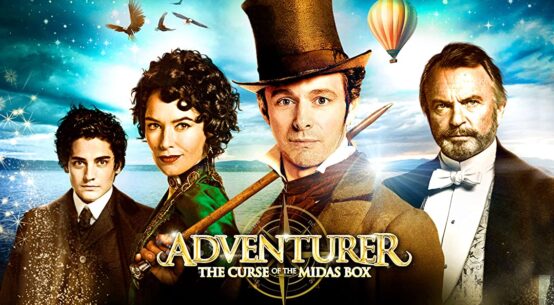You don’t shell out thousands and even millions of dollars just to let the film bury itself inside the can.
Whether you intend the film to be watched for commercial purposes or you want it to be merely seen and touch lives of people for non-commercial film screenings, festivals and other related artistic endeavors, you need to let the people know that there is something to watch out for.
Creativity and networking are the keys to effective marketing. From PR materials to merchandising items, they all play significant roles in making the film better known; while actually earning additional money from sales through branded materials.
Classic examples of a film franchise’s merchandising items include books, shirts, button pins, bookmarks, keychains, bags, caps, paperweights, and school supplies (especially for children’s movies like “Harry Potter” and “Ice Age”) where the title of the film or a sample art work relating to it is branded into the items. Sponsors also receive product placements in films and their logos and contact details can even be placed at the film credits. The major ones are also provided advertisements and write-ups in newspapers, magazines, websites, blogs, and sometimes, even the film poster. Events and advanced screenings (to further create a buzz about the film) also become sources of sponsorship goods.
Press people get invited to conferences and advanced screenings. They receive printed and digital copies of press kits containing publicity photos, production notes, film poster, bonus articles about the film and film trailers and other media files. There are also fun stuff sold in a number of stores and Internet sites where, more than just the merchandising materials, the actual props used in films are sold or auctioned. Sponsorships and x-deals on children’s films are also common in fast food chains and other commercial establishments where merchandise items are sold or given as freebies.
It is quite clear how the marketing arm of a mainstream production goes. However, even independent films try out effective marketing strategies. Taking the idea of marketing in an independent production: a person talks about the film to friends, then friends-of-friends, and so on. The filmmaker and his/her team build profiles of the film in a number of networks in the Internet, create a website and blog for the film, put trailers on online video sites like Youtube, and even collaborate with musicians for the scoring and coming out of music videos for mutual benefits. They showcase the film posters in many venues as well. People are invited to watch the film through post cards, phone calls, text brigades, emails, film e-groups and social networking sites.
A film also clings on to reviews and words from those who watched it in advanced/press screenings. The idea is, “if the film is really good, people will start talking about it.” With Hollywood productions and even independently-produced films like “Little Miss Sunshine” and “Once,” words coming out from those who initially saw the films affect their box office power.
In the Philippines, the main difference between Hollywood films and most of the country’s local films is how the value of marketing is practiced and taken into account. To compare, it’s still Hollywood and developed countries (with successful film industries greatly supported by their governments as well as private institutions) that have ample budget to market their films effectively. However, this doesn’t mean that Filipinos should hamper their creativity in marketing strategies. Being creative and resourceful people, Filipinos (whether involved in commercial or independent films) can come up with great ideas and innovations on how to go about it. And this also applies to struggling independent filmmakers and small production companies anywhere in the world. In fact, by this time and age, basic marketing strategies abound with or without a big budget. In this era of fast-paced communication and information technology where it is already very feasible to reach the greatest number of people through viral campaigns in the inter net, marketing a film is just a matter of setting priorities and putting effort and creativity to it.
It’s as simple as: “If you have a film, you have to let other people know about it.” You have to reach out and let the people share their thoughts about the film. It’s a storytelling medium anyway. Just tell them you have a story that they may just want to check out, and hopefully, enjoy.






